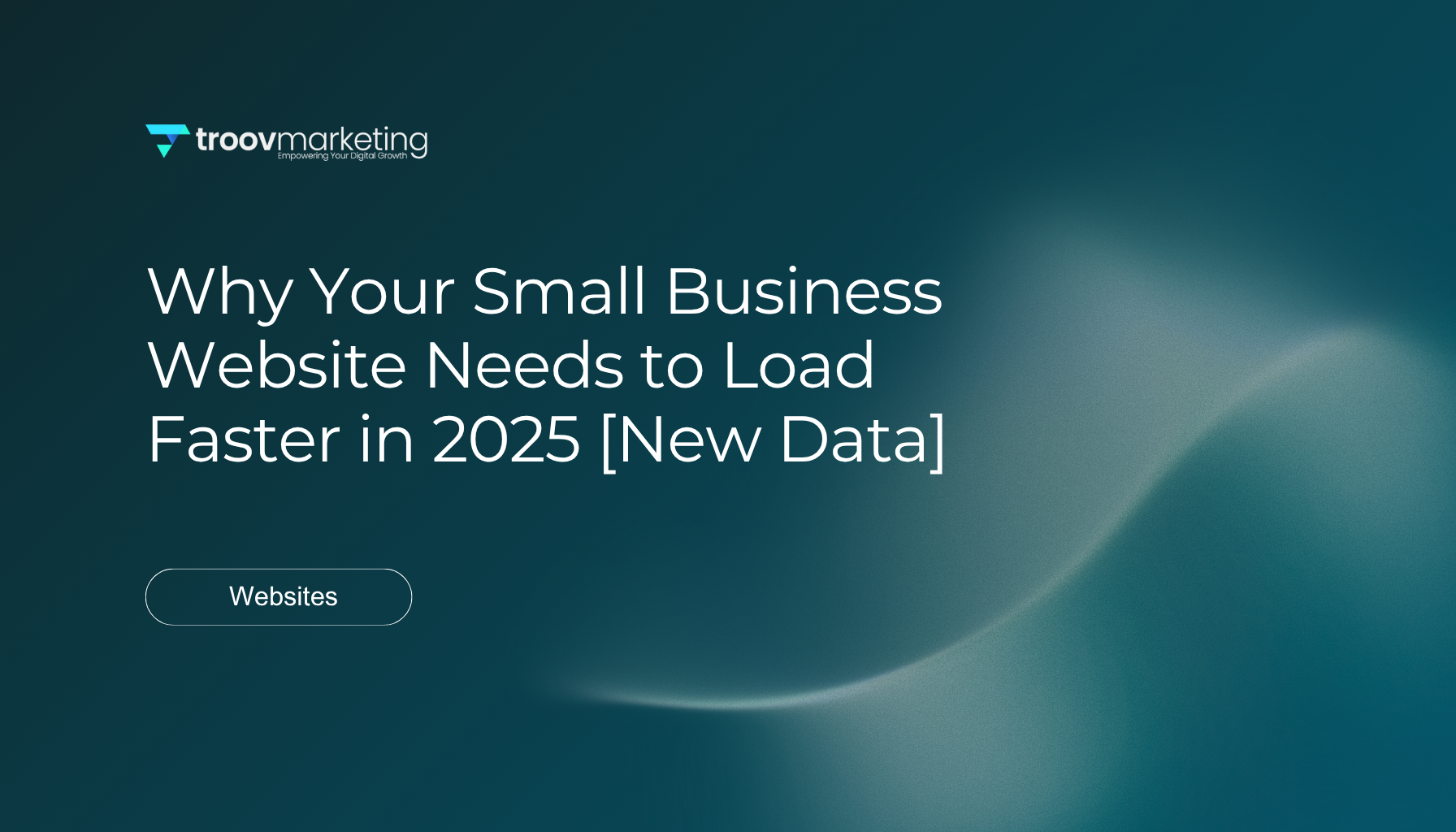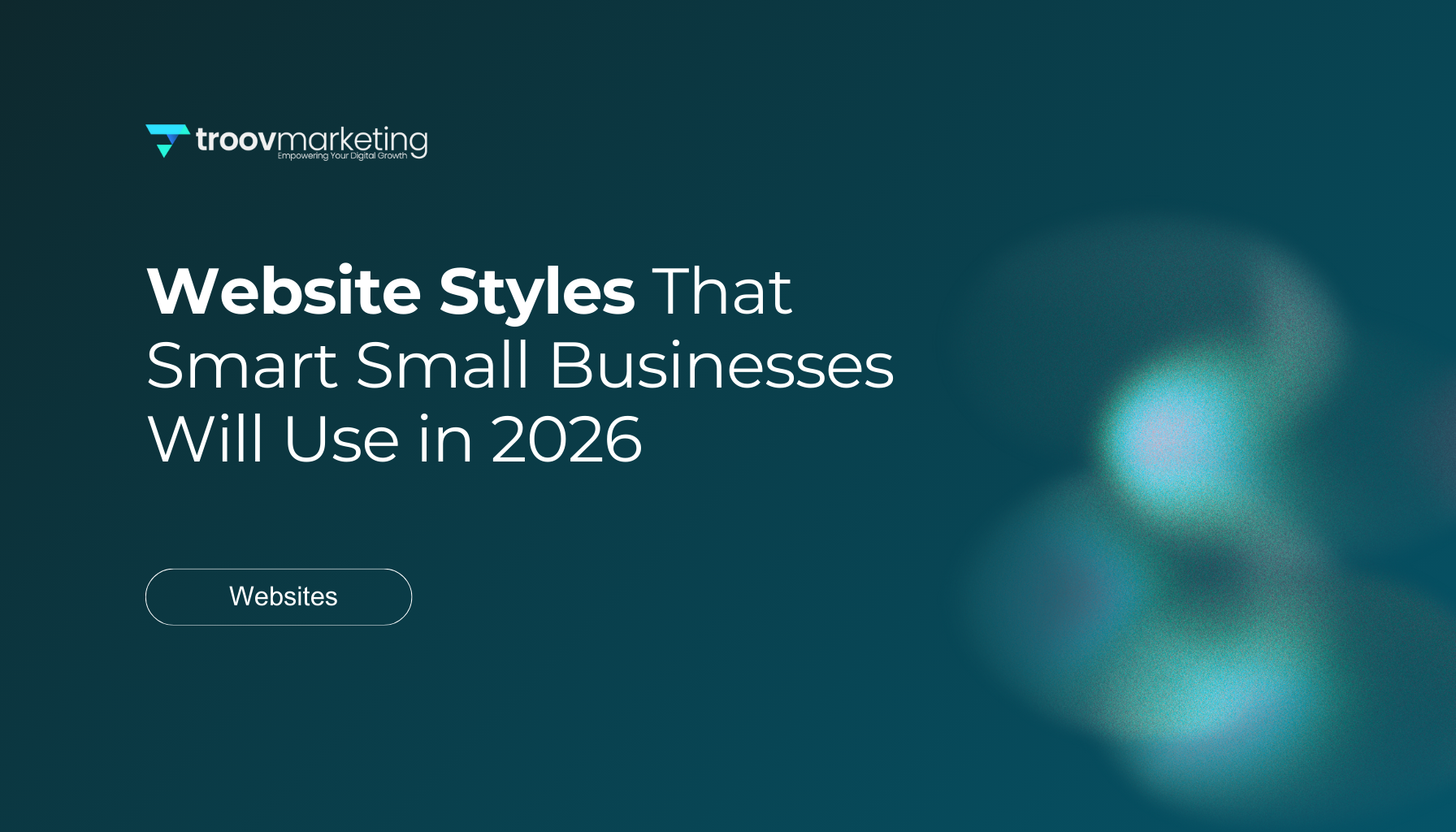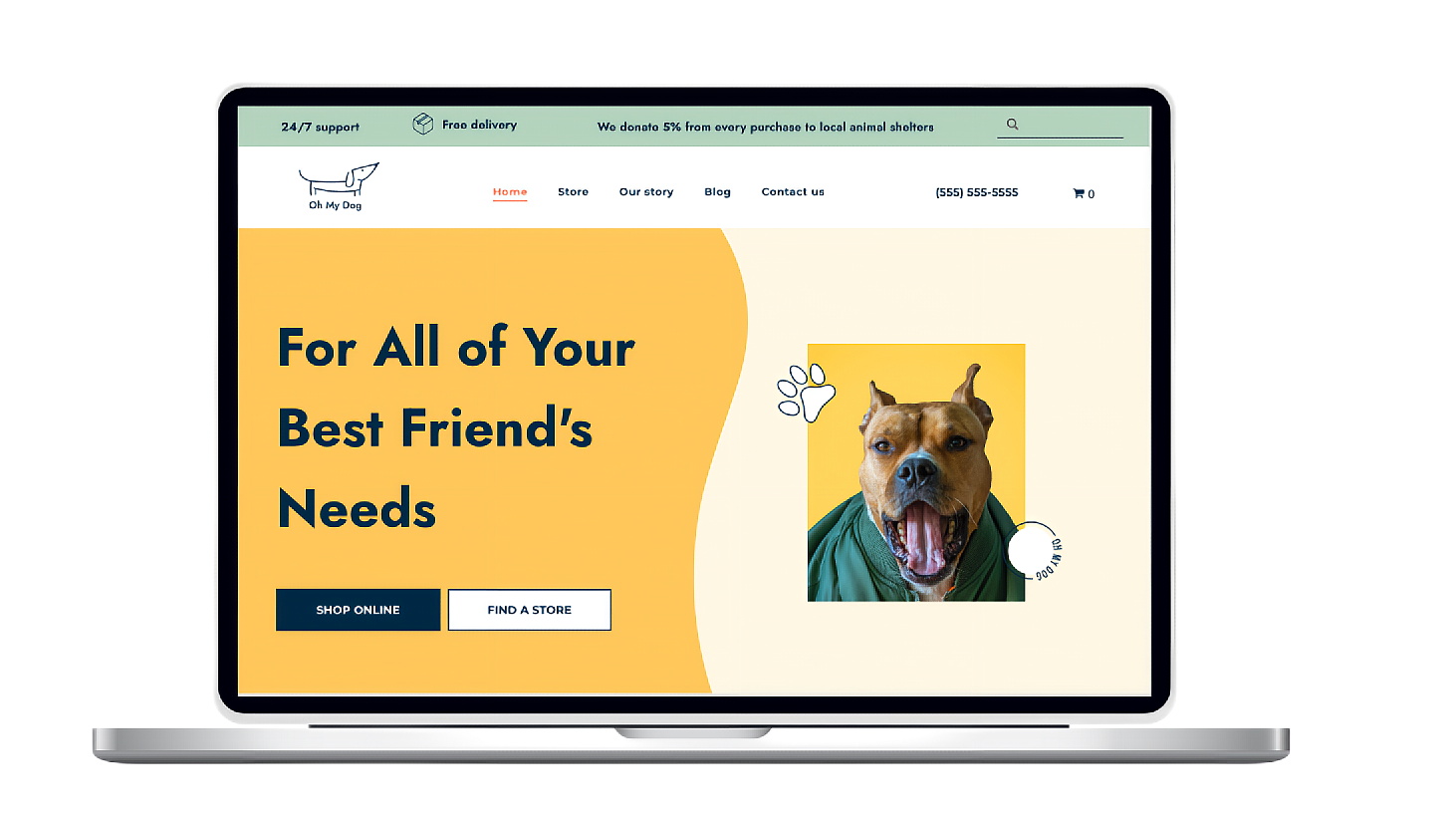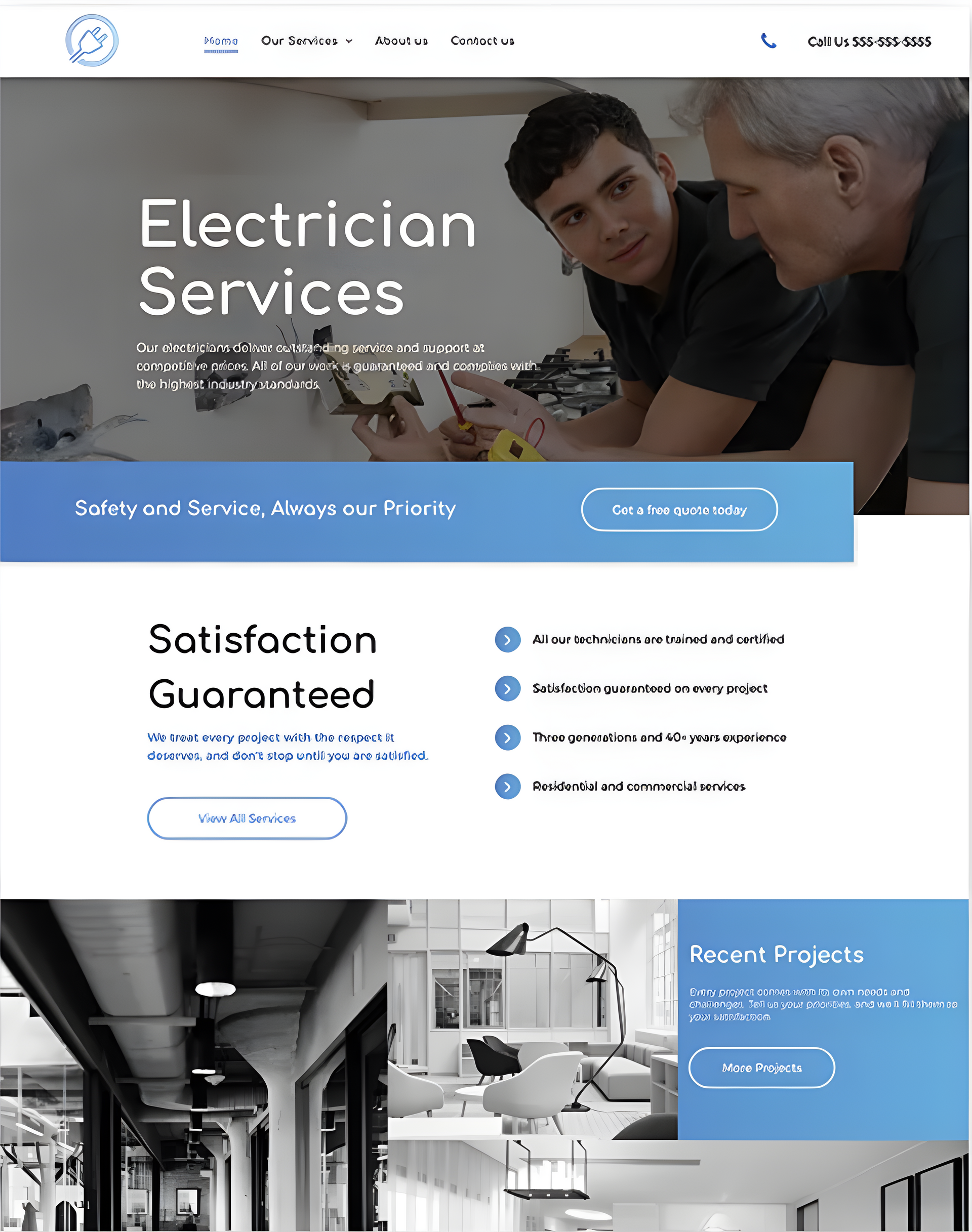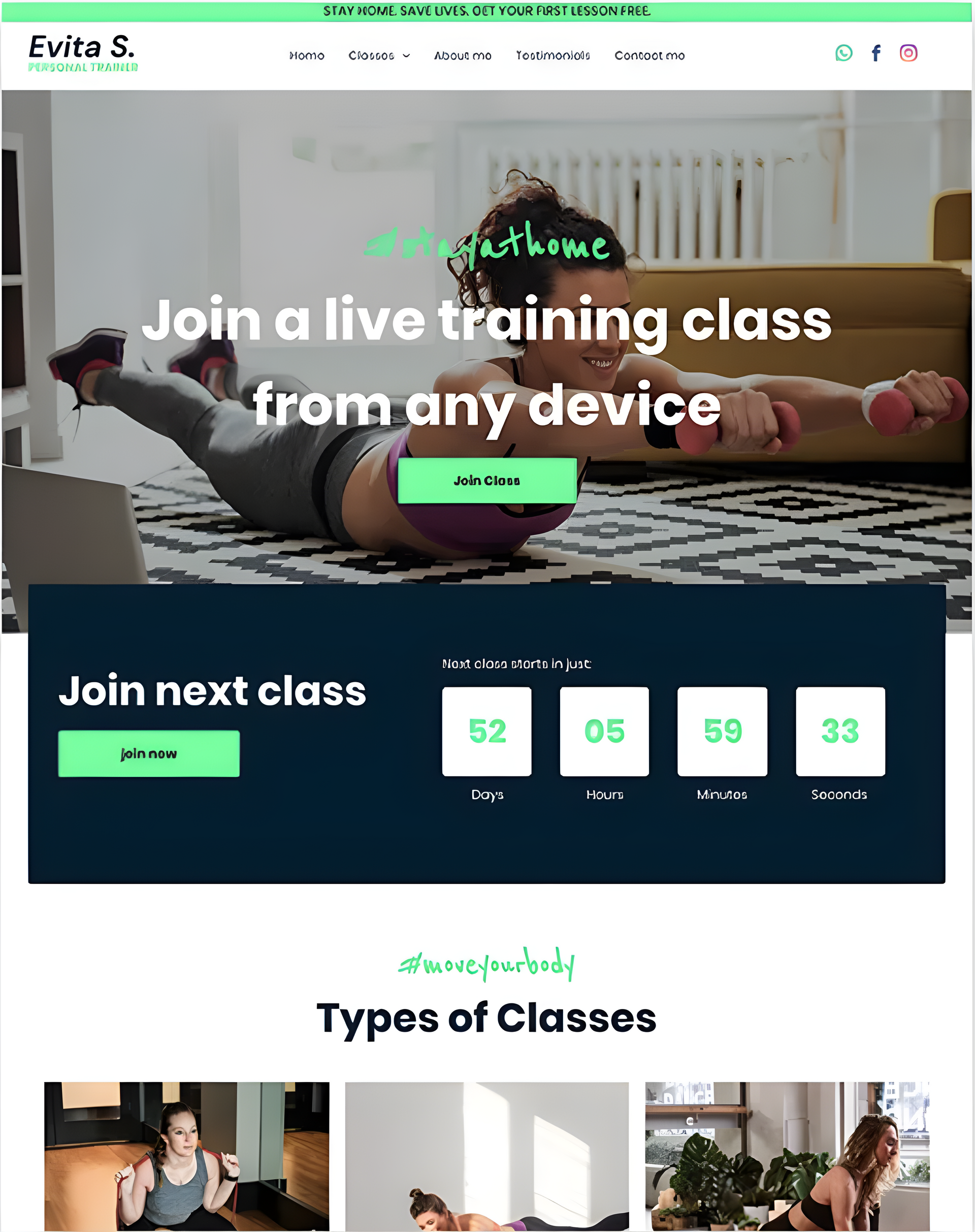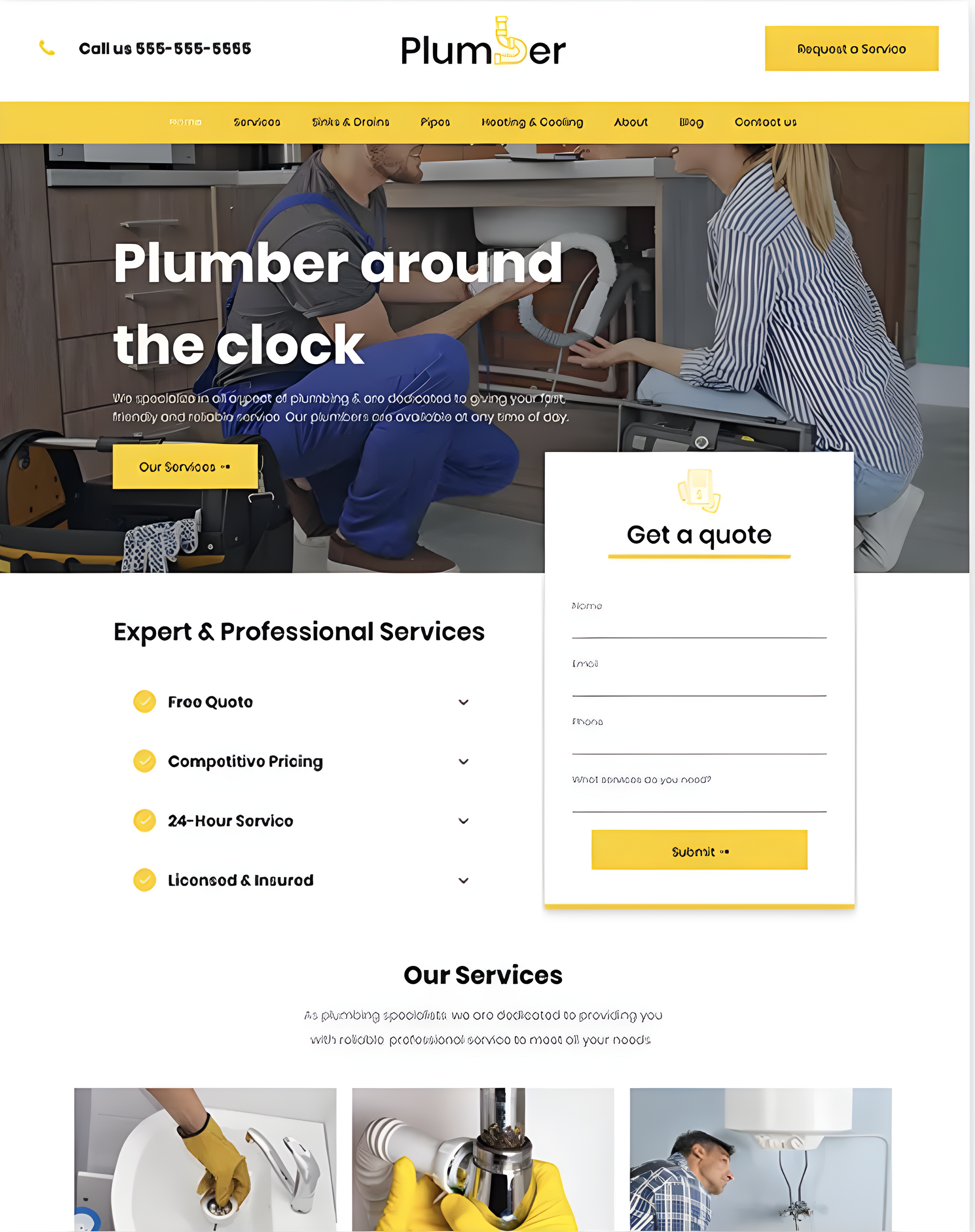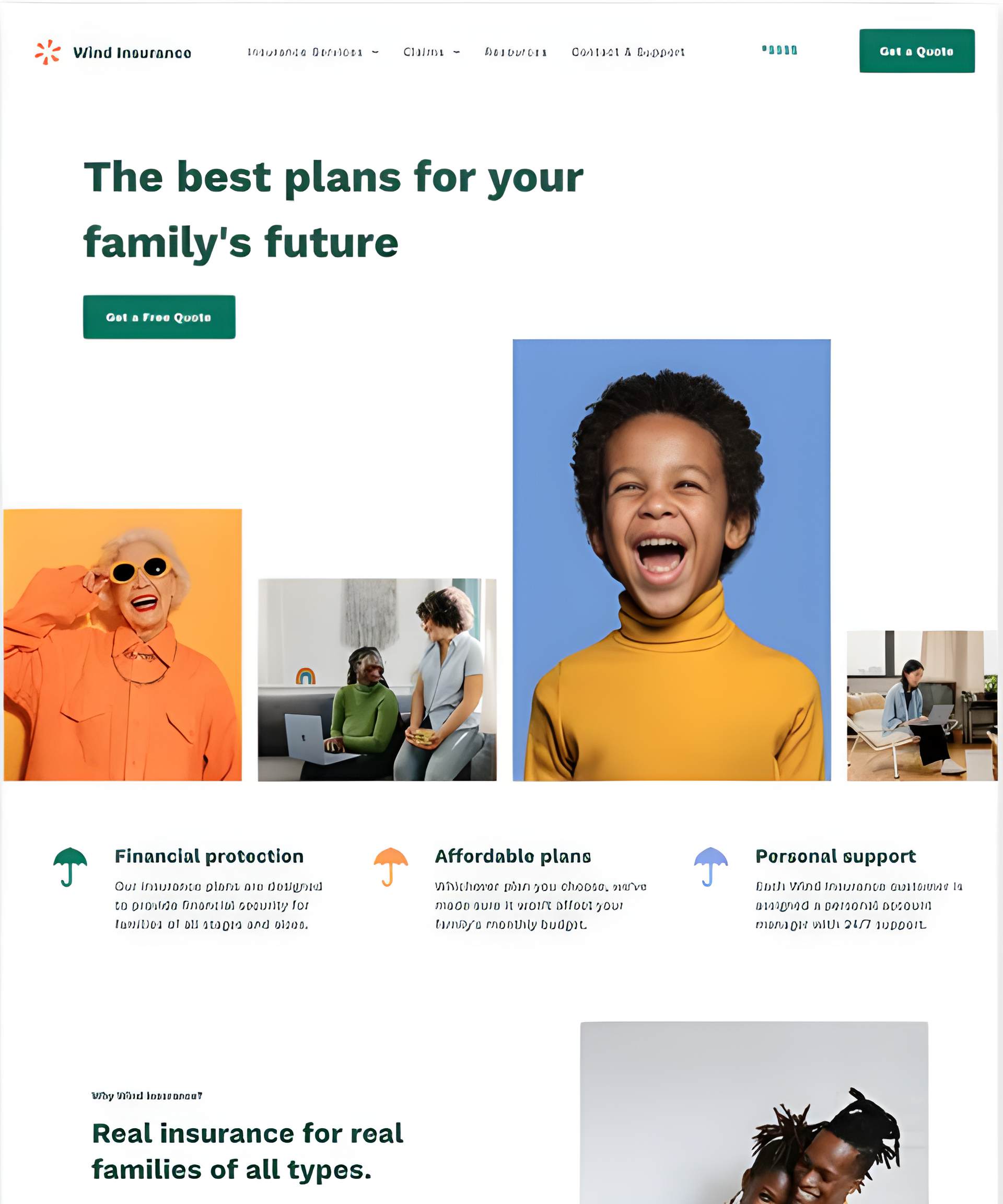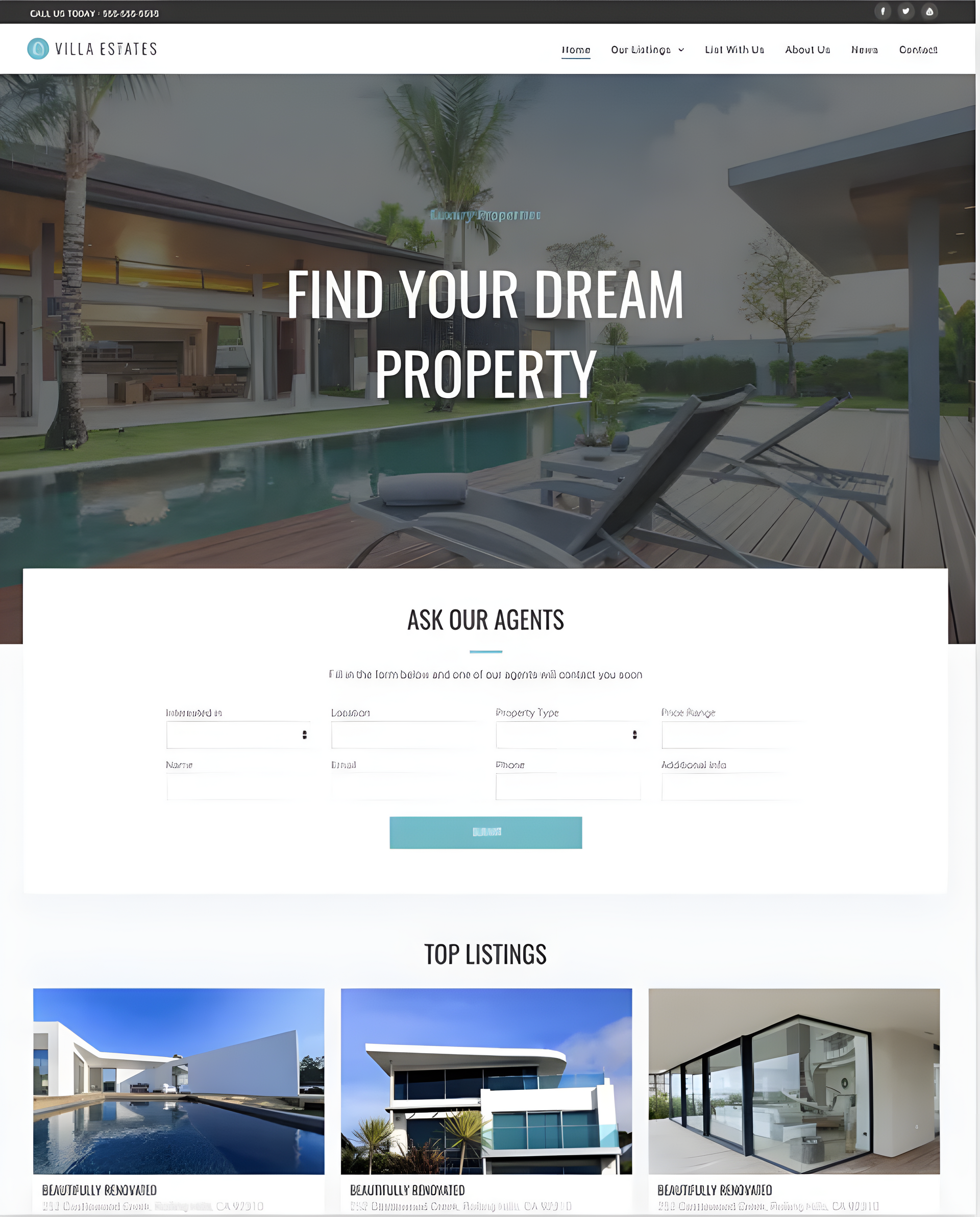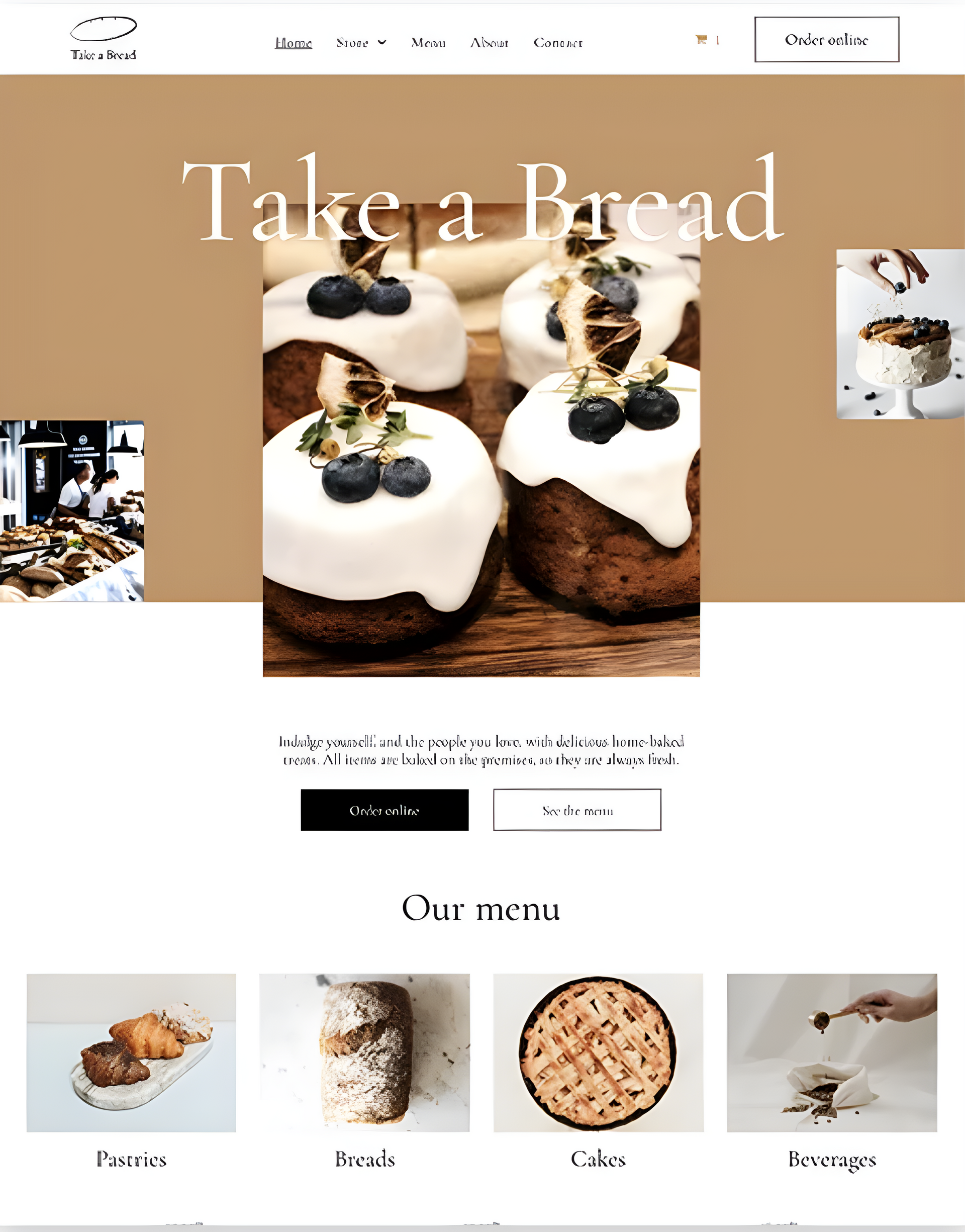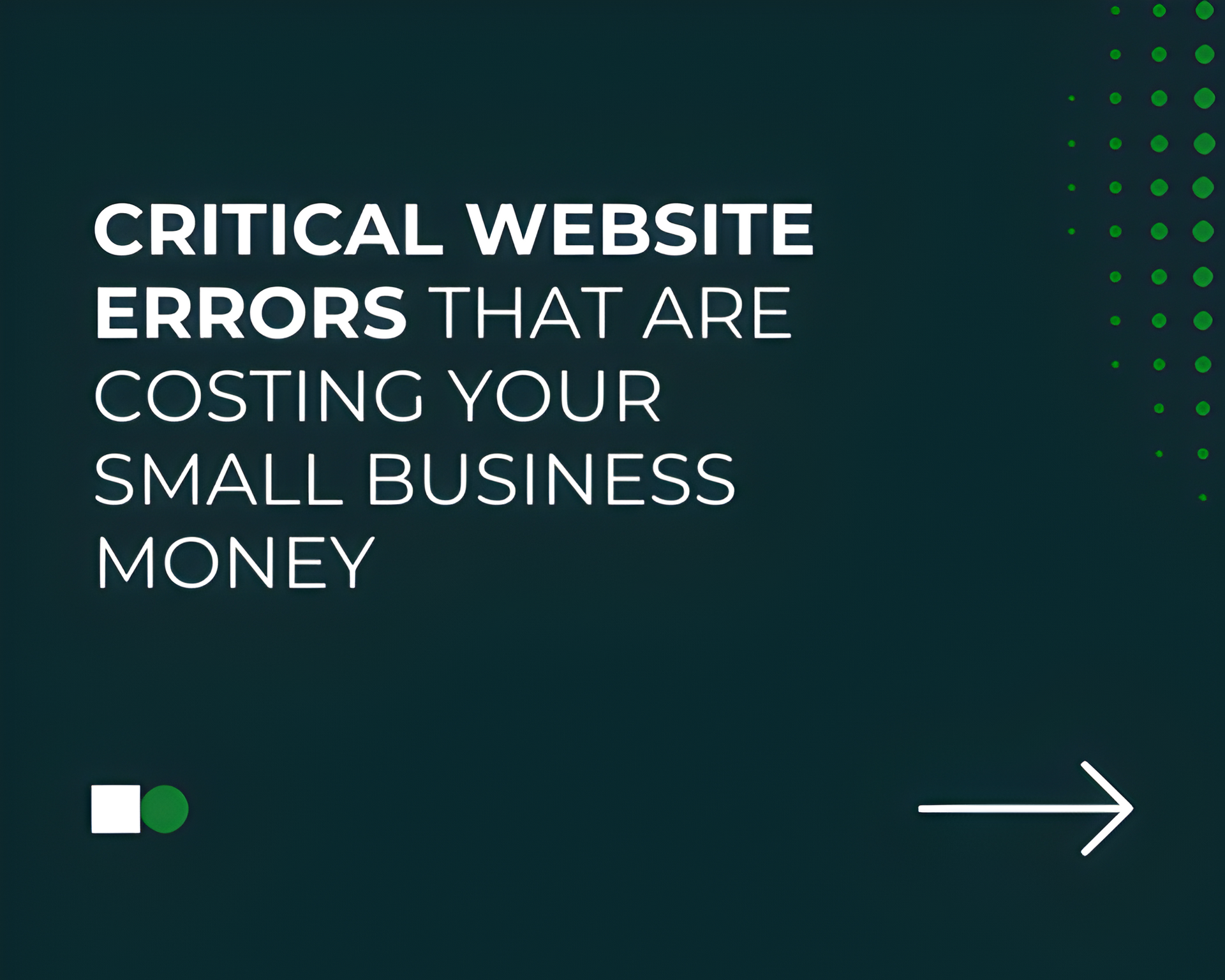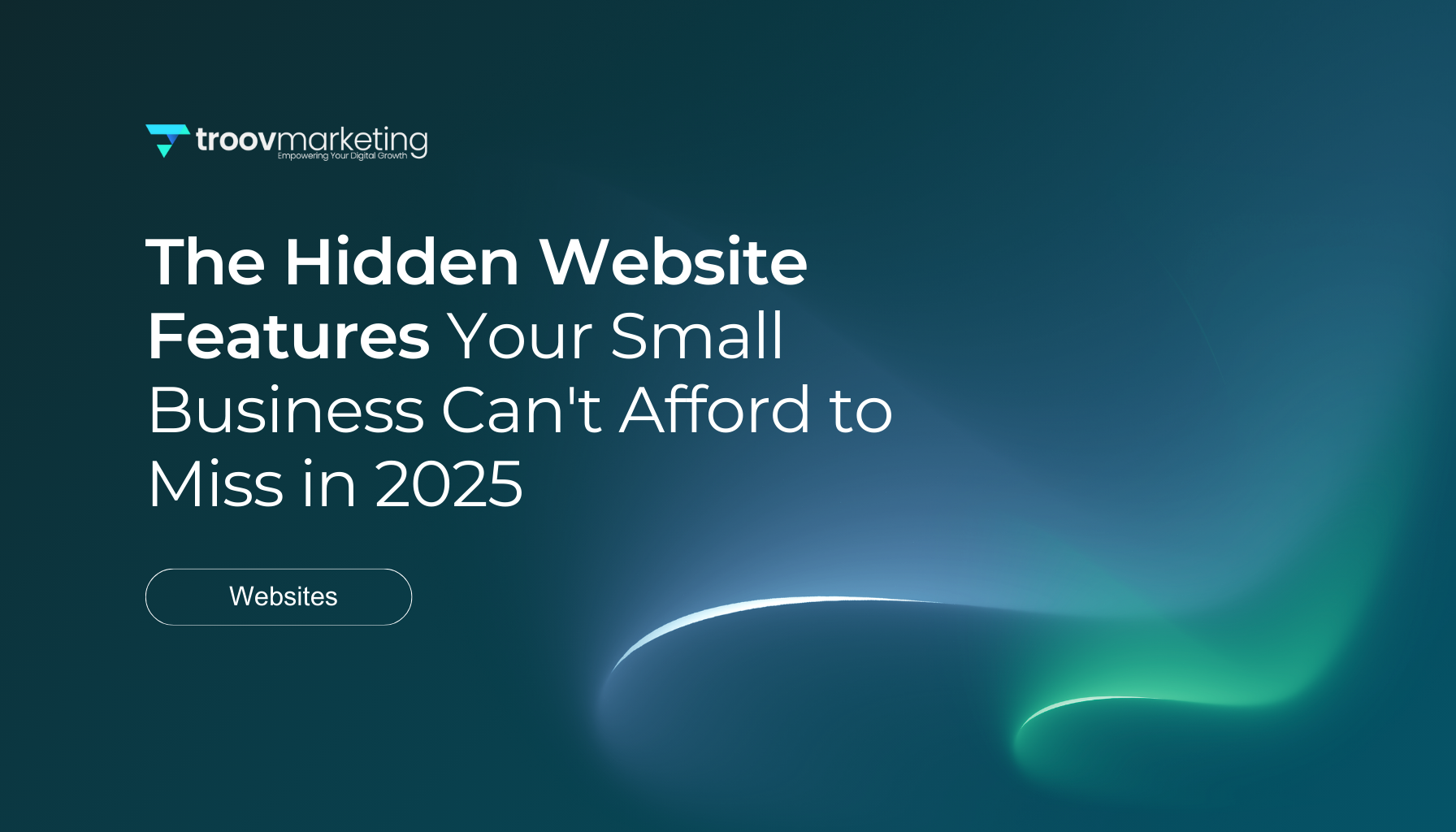September 28, 2025
Your business's website styles shape 95% of visitors' first impressions. Advanced websites will become crucial to retain customers by 2026, not just a luxury. Mobile users generate over 60% of global web traffic, exceeding desktop usage. This change has elevated website design from visual esthetics to a vital business asset. Google now evaluates websites primarily based on mobile performance. More businesses recognize the value of environmentally responsible elements. My clients have cut hosting costs by 30-40% through eco-friendly design implementation. This piece explores dominant website design styles for 2026. You'll discover everything from organic shapes and micro-interactions to eco-friendly approaches and immersive 3D experiences. These strategies will help your small business thrive in the expanding digital world, whether you're redesigning or creating your first website. Color and Typography Trends for 2026 Colors and typography are the foundations of effective website styles. Digital fatigue affects more users each day, and designers have responded with approaches that balance visual appeal with user comfort. Soothing color palettes for digital comfort Attention-grabbing saturated hues no longer dominate the scene. Website design trends for 2026 lean towards nurturing and calming color palettes that create welcoming digital spaces and reduce visual fatigue. People seek stability in uncertain times, so warm and comforting colors now lead modern website design. Rich warm tones guide users through interfaces naturally, alongside sophisticated multi-tonal color schemes. Pantone's Mocha Mousse shows this transformation perfectly - a deep ruby shade that brings "warmth and rich allure". These tranquil color palettes will remain strong throughout 2026, featuring: Honeyed neutrals and warm earth tones that remind us of Arizona canyons Blues and forest greens inspired by nature Ruby reds and vintage rose tones that add subtle warmth Spearmint green emerging as a dominant shade These calming palettes serve more than just esthetic purposes. Color experts say these grounded atmospheres work as "welcoming retreats from chaos". Many brands now use black-and-white foundations with a single accent color to highlight hierarchy and make core actions clear. Maximalist and expressive typography Typography takes a bold approach while color trends stay tranquil. Website design styles have moved beyond minimalism, and maximalist typography has gained status. Modern typefaces look nothing like the clean, restrained fonts of previous years (such as Helvetica or Roboto). These maximalist typefaces feature: Bold weights that catch your eye Unique shapes with experimental letterforms Playful textures with gradients or 3D effects Oversized layouts that fill the screen Users scroll through endless feeds, so bold typography serves as a visual hook that grabs attention instantly. Small businesses can now express their unique personality through typography - whether they choose custom-designed fonts or creative options from Fontshare or Google Fonts. Bold, oversized headlines now tell the visual story on modern home screens and establish brand voice without competing images. Variable fonts make this practical by offering multiple weights and widths in one font file, which reduces network requests and speeds up website performance. High-contrast font pairings Designers mix serif and sans-serif fonts more often to create clear visual hierarchies, making high-contrast font pairings a rising trend. These contrasting typefaces stimulate vision and highlight key messages, which makes them perfect for headlines, titles, and call-to-action buttons. Small businesses can use this approach to stand out in competitive digital spaces. A chunky slab serif paired with a delicate script creates dynamic visual tension, as does combining a monospaced font with a decorative display typeface. Designers suggest using just two or three fonts that share a common theme to maintain cohesion without creating chaos. Kinetic text effects have become standard in modern website design. Simple animations - like typewriter effects, morphing letters, or hover actions - add interactivity without slowing down load times. These micro-animations make call-to-action elements more engaging and help guide users through content. Organic Shapes and Anti-Grid Layouts Traditional website layouts are moving faster toward more dynamic design approaches in 2026. Small businesses now accept new ideas about fluid, organic shapes that create welcoming digital spaces, leaving behind the strictly arranged columns and rows that ruled web design for years. Moving beyond rigid grids Grid-based designs don't excite anyone anymore - they look too basic and templated. Web designers want to add something fresh and unique to their work. Breaking free from standard grids has become the hallmark of modern website design. David Carson, known as the father of "grunge typography," inspired this movement. His style blends textures, collages, and broken layouts that put emotional connections above strict structure. Carson believes in using instinct and feeling. He wants designers to look around them and weave everything they see into their work. The move to anti-grid layouts comes from wanting websites to feel more human. Designers now put users and content first instead of forcing everything into boxes. Modern CSS layout features like Flexbox and Grid let designers create flexible layouts that work with different content types and screen sizes. Your users won't care if your design doesn't fit a perfect 12-column grid. They'll notice when they can't use your site easily. That's why developers now build layouts based on natural element sizes, which creates designs that feel more organic. Using fluid shapes for storytelling Nature-inspired shapes bring a fresh look to websites. These irregular forms with their curves and asymmetry stand out from the straight lines and angles we saw everywhere before. These fluid elements work hard: They lead eyes smoothly across pages for better reading and interaction They create depth through layered shadows and gradients They make rigid structures feel more alive and friendly Organic shapes spark emotions and connections better than straight-line designs. Their natural flow makes websites more welcoming and beautiful. This style breaks away from the perfectionism that used to rule web design. David Carson thinks chasing perfection kills creativity and makes things boring. Websites with organic shapes add just enough chaos to make digital experiences stick in your mind. Examples from modern websites Many top companies combine organic shapes and anti-grid layouts in their digital presence: Dropbox uses soft, flowing "blob" shapes in the background. This simple change makes their layout feel fresh and approachable. Mailchimp's website features hand-drawn organic shapes that match their creative and friendly brand. These elements fit perfectly with their fun personality. Spotify shows how wavy shapes can create rhythm that matches their music-focused brand. Their organic elements turn browsing into an experience that goes beyond just looking at a screen. Stripe uses smooth curves to guide visitors through their site. This subtle touch helps users explore their products naturally. Adobe's website showcases flowing, gradient-filled shapes that highlight their creative focus. As a company selling design tools, this approach matches their identity perfectly. Small businesses can start with a basic grid and carefully break its rules with organic elements. This creates eye-catching sites that still work well. Being organized about it will help you build a website that stands out and gets the job done. Micro-Interactions and Motion Design Digital interfaces come alive with motion, transforming static designs into dynamic experiences. The smart use of animation has grown from simple decoration into a vital part of effective website styles that improve user experience as we look toward 2026. Purposeful animations that guide users The era of flashy, distracting animations that overwhelmed visitors is over. Today's website design focuses on meaningful movement that points users to key actions. These deliberate animations work as quiet guides to help visitors direct through complex interfaces without explicit instructions. Good micro-interactions can boost user satisfaction by about 20% by making interactions more user-friendly. Users process information naturally with animations that reduce mental effort and provide clear visual feedback, making interfaces feel responsive. Smart motion design creates what designers call "invisible threads" that build exceptional user experiences. These quick, meaningful animations connect user intent with system feedback. The right implementation turns static interfaces into dynamic, responsive environments that feel natural and alive. Research in human-computer interaction shows that quick, smooth visual responses reassure users that their input matters. Simple visual hints during wait times, like loading animations or progress indicators, make websites feel more responsive. Subtle feedback through hover and scroll Micro-interactions—those small, functional animations that provide feedback—have become key elements in website design trends for 2026. These delightful moments include color-changing buttons on hover, checkmarks appearing in completed form fields, or gentle animations that acknowledge user actions. Hover effects stand out as highly effective micro-interactions. A button's color change signals it's clickable. Extra information appears when users hover over product images, showing details without cluttering the screen. Good hover effects follow these principles: Smooth transitions keep the user experience seamless Subtle changes like soft color shifts or gentle enlargements work best Uniform hover effects create a cohesive look Each enhancement adds real value to navigation Scroll-triggered animations help users explore content naturally. Elements fade in or slide into view as users scroll down, creating a sense of discovery. These animations work as spatial guides that help users understand where they are on the page. Balancing motion with performance Motion brings benefits, but website performance comes first. Google reports that 53% of mobile users leave sites that take more than three seconds to load. Smart businesses must balance engaging motion with technical efficiency. Small businesses can achieve this balance by: First, using CSS animations instead of JavaScript when possible. These run better by using the compositor thread rather than blocking the main thread. Next, using hardware acceleration with GPU-accelerated properties like transform and opacity lets browsers send animation work to the GPU. Third, loading non-essential animations, especially those below the fold, after critical content appears. User preferences for reduced motion matter too. Some visitors might be sensitive to motion, so the "prefers-reduced-motion" media query helps your website detect and adjust animations. Too many animations can slow down your site. Simple animations improve user experience without hurting performance. Like many design elements, moderation works best—animations add value when used carefully but distract when overused. Motion design in 2026 will do more than look good. Animations will tell stories and serve practical purposes, while AI-powered micro-interactions adapt to how users behave. These advances will create smoother, more engaging digital experiences that respond smartly to each user's needs and habits. Sustainable and Eco-Friendly Web Design Forward-thinking businesses now recognize websites' effect on the environment as a crucial concern. The internet generates about 3.7% of global carbon emissions. This number keeps growing as we consume more digital content. Green hosting and energy-efficient code Your website's green journey starts with its hosting environment. Data centers use enough power to light up 50,000 homes. Global data centers use about 1.5% of the world's total electricity. Picking eco-friendly hosting can make a real difference. Green hosting providers run their servers on renewable energy or buy carbon offsets. GreenGeeks matches every unit of energy with triple the amount in renewable energy. InMotion Hosting has reduced its cooling costs by almost 70% since 2010. Clean, efficient code plays a vital role behind the scenes. Your website needs less processing power with optimized code, which leads to lower carbon emissions. Here are some helpful coding practices: Minify CSS, JavaScript, and HTML files to cut file size Remove unused libraries and plugins that slow things down Pick lightweight frameworks or vanilla JavaScript when you can Server caching might sound technical, but it saves energy. It creates static versions of pages beforehand and reduces processing needs for each visitor. Reducing digital carbon footprint Each webpage creates 0.8 grams of CO2 equivalent per view. A site with 10,000 monthly views generates 102kg of CO2e yearly—like driving 700km in a car. Images and videos take up over 50% of a page's data load. You can shrink this footprint by optimizing them first. WebP format images are 30% smaller than JPEGs. Lazy loading helps too—images load only when visitors see them on screen. Dark mode looks good and saves energy. OLED screens, found in most modern devices, use 42% less energy with dark mode. Big companies like Unilever use this feature on their websites to cut energy use. Light pages need less energy to load. Try to keep pages under 1.5 megabytes, which beats the global average of 2.4 megabytes. Lining up with user values and SEO Green practices help both the planet and your business. Sites built with sustainability in mind load faster and rank better in search results. Search engines like fast-loading, mobile-friendly sites. Green web practices create efficient sites naturally. CDNs cut energy use by 70% and speed up loading times by serving content from nearby locations. Companies that adopt green web design see better brand perception. This creates an edge as more people choose eco-friendly businesses. Patagonia shows how it's done—they got an "A" carbon rating while keeping a strong online presence. The future of web design is green. By 2025, communications technology will create more carbon than any country except China, India, and the U.S. Small businesses planning their 2026 website styles should see green web design as both an eco-friendly choice and a smart business move. 3D, AR, and Virtual Experiences Immersive technologies are changing the digital world faster than ever. Small businesses now use 3D and AR elements as powerful tools to create unique website styles. These technologies turn simple browsing into active exploration. Users get memorable digital experiences that boost engagement and sales. Interactive 3D product views 3D product visualization takes a big step beyond flat product images. Users can rotate, zoom, and look at products from every angle with interactive 3D models. This gives them an experience close to in-store shopping. 3D product visualization makes a big difference in business: Pages with 3D content keep users engaged 4 times longer Products with 3D views are 30% more likely to sell Returns drop by up to 70% when customers can see products in 3D Product configurators let customers customize their choices and see changes right away before buying. These tools make customization simple and fun. This works great for furniture, clothes, and car sales where personalization matters. Small businesses can stand out in busy markets with 3D product viewers. These tools do more than just show products. They demonstrate features, show important details, and create an engaging experience that connects with potential buyers. Virtual try-ons and immersive tours AR helps bridge the gap between online browsing and physical shopping. By 2026, AR features will become standard tools in many industries. Virtual try-on features help customers see products in real life before buying: Clothing stores let customers "wear" outfits virtually Eyewear companies show how frames look on your face Furniture stores help you place items in your home Businesses using AR see 94% higher sales compared to those without it. AR works so well because it helps solve the biggest problem in online shopping - knowing how things will look or fit in real life. Virtual tours are changing how real estate and hotels do business. Buyers can walk through properties from anywhere. Hotels can show off their best features through 3D environments. This helps businesses reach customers far beyond their local area. Performance tips for 3D content Small businesses need to balance 3D and AR features with good website performance. Here are some key ways to optimize: Your 3D models should use fewer materials and textures. Simple surfaces work better. Texture atlases can combine multiple materials and reduce processing needs. Keep polygon counts low and add detail only where needed. Too many triangles or vertices slow down mobile devices. Put extra detail only in the important parts of predictable models. Use the right file formats to compress 3D assets. GLTF/GLB files work best for websites. DRACO compression can make files much smaller without losing quality. Level of Detail (LOD) techniques show simpler versions of models from far away. This keeps important details while saving resources. Small businesses can create unique website experiences that grab attention and drive sales by using these immersive technologies the right way. Text-Only Hero Sections and Custom Illustrations Website hero sections - the prime space at the top of your homepage - will look quite different in 2026. Smart small businesses now embrace minimalism where it matters most. Why text-only hero images are trending Hero sections with stock photos no longer grab attention as websites now favor bold, text-only typography in their opening sections. Visitors need clear value propositions right away without visual clutter to distract them from the core message. Recent A/B testing reveals that landing pages with clear text and prominent call-to-action buttons boost conversions by up to 20% compared to image-heavy designs. Text-only hero sections load faster than large images and meet Google's Core Web Vitals standards better. Replacing stock photos with custom art Users typically read only 20% of any webpage. Your visuals must tell the story. Many businesses still rely on generic stock photography that makes their brand seem fake or dull when overused. Custom illustrations provide a fresh alternative that helps companies stand apart while communicating their message beyond what words can express. Creating brand identity through visuals Custom illustrations reshape your brand's identity and make it instantly recognizable. These unique visual elements grab audience attention better than stock photos while showcasing your brand's personality. Your emails become more engaging with bespoke illustrations, leading to higher open rates and better recall. This approach creates consistent visual identity at every customer touchpoint. Conclusion Website design keeps evolving quickly as technology advances and user expectations change. This piece explores the key trends that will shape small business websites by 2026. Soothing color palettes combined with expressive typography create visually appealing and comfortable experiences. Organic shapes now break free from rigid grid systems and add a human touch to digital spaces. Motion design and micro-interactions have evolved from simple decorations into vital parts of user experience. These subtle animations guide visitors through your site naturally while giving helpful feedback. Eco-friendly web practices now serve both environmental and business purposes - they reduce carbon footprints and improve performance metrics. Small businesses can now showcase products through interactive 3D models and augmented reality experiences. These tools boost engagement and conversion rates by a lot as they bridge the gap between digital browsing and physical reality. Text-only hero sections paired with custom illustrations help distinguish your brand from competitors who rely on generic stock photography. Small businesses have a chance to stand out by embracing these forward-thinking design approaches. Your website is more than just an online brochure - it's your most powerful marketing tool that often gives potential customers their first impression. Companies that adapt their digital presence now will gain major advantages over competitors who stick to outdated design practices. Note that using these trends doesn't mean rebuilding your entire website at once. You can start by picking one or two elements that line up with your brand identity and business goals. Your focus could be sustainability, immersive experiences, or typography upgrades - each improvement brings your digital presence closer to meeting future consumer expectations. Key Takeaways Smart small businesses preparing for 2026 should focus on creating websites that balance visual appeal with performance, sustainability, and user experience to stay competitive in an increasingly digital marketplace. • Embrace calming design elements : Use soothing color palettes and bold typography to reduce digital fatigue while creating memorable brand experiences that stand out from competitors. • Break traditional layouts : Implement organic shapes and anti-grid designs to create more human, approachable websites that guide users naturally through your content. • Add purposeful motion : Use micro-interactions and subtle animations to improve user engagement by 20% while maintaining fast loading speeds for better SEO performance. • Prioritize sustainable practices : Choose green hosting and optimize code to reduce your website's carbon footprint by up to 30-40% while improving site speed and search rankings. • Integrate immersive experiences : Implement 3D product views and AR features to increase conversion rates by 94% and reduce return rates by up to 70%. • Focus on authentic visuals : Replace generic stock photos with custom illustrations and text-only hero sections to create distinctive brand identity and faster-loading pages. These trends aren't just esthetic choices—they're strategic business decisions that directly impact user engagement, conversion rates, and search engine performance. Start by implementing one or two elements that align with your brand goals, then gradually expand your approach as you see results. FAQs Q1. What are the key website design trends for small businesses in 2026? Key trends include soothing color palettes, expressive typography, organic shapes, micro-interactions, sustainable web practices, 3D and AR experiences, and text-only hero sections with custom illustrations. Q2. How can small businesses make their websites more eco-friendly? Small businesses can adopt green hosting, optimize code for energy efficiency, reduce digital carbon footprint through image optimization and dark mode options, and aim for lighter page weights to create more sustainable websites. Q3. What role do micro-interactions play in modern website design? Micro-interactions, such as subtle animations and hover effects, guide users through content, provide feedback, and enhance overall user experience. They can increase user satisfaction by about 20% when implemented purposefully. Q4. How can 3D and AR elements improve a small business website? Interactive 3D product views and AR features can increase user engagement, boost conversion rates by up to 94%, and reduce return rates by as much as 70% by allowing customers to examine products more thoroughly before purchase. Q5. Why are text-only hero sections becoming popular for small business websites? Text-only hero sections are trending because they provide clear value propositions immediately without visual distractions. They can increase conversions by up to 20% compared to image-heavy designs and improve site loading speed, benefiting both user experience and SEO.
